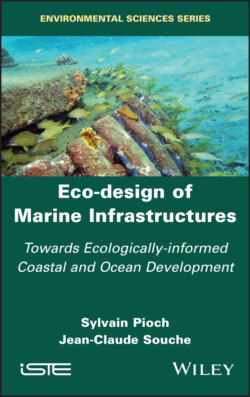Читать книгу Eco-design of Marine Infrastructures - Sylvain Pioch - Страница 23
1.5. The “no net loss of biodiversity” objective: a regulatory obligation for developers, an opportunity for eco-design
ОглавлениеAccording to the Environmental Code, the application for authorization of a project likely to affect the environment must be preceded by an assessment of its environmental consequences. The content of the impact study has just been extensively reformed by a decree and ordinance that reinforce the respect of the hierarchical “avoid, reduce, offset” sequence (ordinance no. 2016-1058 of August 3, 2016, decree no. 2016-1110 of August 11, 2016).
The Act of August 8, 2016 on the reconquest of biodiversity adds to and crowns this normative reinforcement by enshrining the concept of “no net loss of biodiversity” in French law.
From now on, any development project must produce a net neutral balance19 with respect to the losses it will cause to biodiversity in terms of species, habitats, functions and finally ecosystem services.
The impact study is both an approach and a regulatory file:
– the approach is a thorough reflection on the impact of a project on the environment, conducted by the project owner in the same way as they study the technical and economic feasibility of their project;
– the file is the document that explains, in particular for the attention of the examining body that issues the authorization and for the attention of the public, the way in which the project owner has taken the environment into account throughout the design of their project and the measures to which they commit themself to mitigate its impacts.
Regulatory reinforcement now requires a new vision of the development project, not only socio-technical-economic but also ecological, in order to minimize (cancel?) the negative impacts.
These requirements are constantly being reinforced. Even though the controls on the ground are still too weak, it is undeniable that the application of the regulatory framework aiming at a “no net loss of biodiversity” will reinforce the interest towards constructions with a reduced effect on the environment, or even positive ones.
However, a development project exists in response to a functional need that requires a technical response: (i) the function of a breakwater is to protect a port and is adapted to the hydrodynamic actions of the place; (ii) a quay is there to allow the berthing, mooring and loading/unloading of ships and is adapted to the project ship and the transported goods.
This idea should not replace a deleterious business as usual from human activities damaging to the environment, thanks to green washing (fake eco-design) that allows future construction. It is very important to underline here that this approach is to be carried out in parallel with the ARO approach in the impact study.
Therefore, before any integration of the environment into a technical design, it is absolutely necessary to perfectly master the latter. A certain technical virtuosity is required to propose daring technical variants necessary to take the environment into account in the eco-design process.
This is the objective of Chapter 2, which will present a brief review of the technical concepts related to marine structures and the skills that the marine engineer must have.
